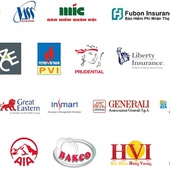Best Time to Visit Vietnam: When to Go & What to Expect
"When is the best time to visit Vietnam" is one of the most common questions that spring up to mind for all trip planners. Finding a time that fits well with your precious holiday, comes with amicable weather and is not packed with other visitors may seem an utopia in this booming age of tourism. Though you may not afford to plan it exactly as advised or find a solution to all your expectation, you can always "make do with" the next best option. Here comes a very convenient truth: anytime can be a good time to visit Vietnam.
The opposing monsoonal season, which transitions from North to South, along with Vietnam's varied terrains and altitudes, creates a landscape where you can find yourself bundled in warm clothing at one stop and sunbathing under bright skies just hours later. While this diversity in climate is beautiful, it also presents unique challenges: there isn't a single month that guarantees perfect weather across the country. Each month brings its own charm and challenges, ensuring that your expectations can only partially be met throughout the year.
If you want good weather
... plan your trip for March-May or October through early December.
Between March and May, the weather in Vietnam is quite stable and agreeable nationwide, characterized by moderate temperatures and limited rainfall. Daytime temperatures usually hover around 30°C (86°F) but only start to rise significantly near the end of May. Humidity tends to be elevated in the northern region (including Hanoi, Halong Bay, and Sapa) and the central region (including Hue, Danang, and Hoi An), while the southern areas (such as Ho Chi Minh City, Nha Trang, and the Mekong Delta) typically experience a less humid climate. This time frame is generally more enjoyable than any other seasons.
In contrast, October through early December offers cooler temperatures that can dip below 20°C (68°F) in northern Vietnam. The low humidity during this period compensates for shorter daylight hours, providing a pleasant cool breeze. Cities like Hanoi are said to revel in their beauty during these months. Although rainfall may increase as you travel south, temperatures are often warmer and showers tend to be brief. For a stay primarily focused on central Vietnam, the March-May interval might remain the most favorable due to a lower probability of heavy downpours.
This balmy weather enhances outdoor activities, inviting you to relax on southern beaches or embark on adventurous dirt bike rides in the northern regions. The risk of sunstroke, landslides, flooding, or typhoons is significantly reduced, particularly from March to May, leading to fewer trip cancellations.
If you want to experience festivals
... schedule your visit between December and March.
The timeframe from late December to March is replete with cultural festivities, blending modern celebrations with age-old traditions.
As December draws to a close, cities across Vietnam come alive with vibrant Christmas decorations and New Year festivities, providing insight into the multicultural fabric of the country. Churches and cathedral festivities include nativity scenes, prayers, and carols, while urban centers are adorned in festive flair. Many young people choose to celebrate between Christmas and New Year, opting to socialize with friends rather than engage in family gatherings, reserving that for the Tết holiday.
Vietnamese people enjoy a public holiday spanning 2-3 days for New Year's celebrations, with many taking short trips to nearby beaches or famous tourist spots like Halong Bay and Dalat before heading back to prepare for Tết, which falls between late January and mid-February according to the lunar calendar.
Tết, the Lunar New Year, represents a significant event in Vietnam, symbolizing renewal and hope for the year ahead. It serves as a time of family gathering and reflection. The bustle leading up to Tết is captivating, with supermarkets filled with traditional foods, streets buzzing with shoppers, and decorative trees eagerly awaiting their new homes. Both city and countryside become animated, making it an exciting time to visit Vietnam.
During the Tết holiday, however, the atmosphere changes; shops close, and streets become quiet as people focus on family visits and traditional ceremonies. While services are sparse, the warmth and festivity within local families create a unique experience. The post-Tết period, from mid-February to the end of March, continues to host numerous cultural events such as Lim Festival in Bac Ninh and Perfume Pagoda in Hanoi, making this a rich time for experiencing Vietnamese culture.
If you want to offer your family the best holiday
... consider traveling between March-May or in November.
Traveling during the sweltering heat of summer (June-August), the heavy rains (September-early October), or the busy seasons (December-February) is generally unappealing for families.
Thus, the most manageable choices are March-May or November, when the climate is most temperate and traffic is reasonable. March heralds the onset of spring, and children can delight in witnessing tropical flowers in full bloom.
The cooler weather, alongside low domestic tourism, allows families to explore all that Vietnam has to offer: pristine beaches, majestic mountains, lush rainforests, and vibrant cities. For those seeking fun, options abound with attractions like VinWonders (located in Nha Trang, Phu Quoc, and Nam Hoi An) or Sun World Parks (in destinations such as Sapa, Halong Bay, Danang, and Cat Ba).
If you are mostly interested in a beach escape
... choose to travel in January or April-May.
For a January visit, consider southern beaches like Nha Trang, Vung Tau, or Phu Quoc. If your trip falls in April or May, opt for northern or central beaches such as Cat Ba Island, Thuan An, An Bang, My Khe, or Ly Son Island.
The choice to visit beaches during these periods is influenced not only by favorable weather conditions—including mild temperatures, low rainfall, clear skies, and gentle breezes—but also because these beaches are often less crowded, ideal for relaxation. Vietnam’s extensive coastline is a treasure, and timing your visit appropriately will greatly enhance your experience.
In addition to enjoying the tranquil waters of the Pacific, you can partake in various water activities, such as snorkeling, scuba diving, paragliding, or island excursions. Vietnam truly is a beach paradise.
If you want to avoid the crowd
... skip traveling from late December to mid-January and avoid weekends during June-August.
Desiring to see all the famous sights often leads to congestion.
If you prefer a quieter experience and can adjust your travel dates, it’s best to steer clear of late December to mid-January and all summer weekends. Late December to mid-January marks peak domestic travel time, with hotels, restaurants, and attractions full to capacity as people embark on holiday vacations. If you avoid this busy season, you’ll likely save a significant amount of money.
Similarly, weekends from June to August witness heavy domestic tourism as many families travel during their children's school holidays, creating an increasingly crowded environment. While weekday visits can still offer enjoyable experiences, weekends are likely to be overwhelming with large family groups gathering.
If you want great deals
... May and September are your best bets.
During May and September, the weather is generally pleasant, with moderate temperatures making them ideal for travel. Additionally, many tourist facilities reduce prices during these months to attract visitors, often resulting in savings of up to 30% compared to peak season rates.
Traveling in these months grants access to quieter beaches, less congested hiking trails, and the opportunity to enjoy amenities like swimming pools without the crowds. The sun shines brightly from 7 AM to 7 PM, offering beautiful weather without the extreme heat of the peak summer months. For both exceptional weather and cost-saving opportunities, planning your trip to Vietnam in May or September is highly recommended.
For further information on temperatures, humidity, rainfall, and seasonal details, please refer to our monthly weather guide.

Latest Travel Alerts & Updates for Vietnam
Can I travel to Vietnam right now? What are the requirement? When can I expect to be allowed to travel to Vietnam? Find answers to these questions with our frequently updated travel alerts.

What $1 Can Buy in Vietnam
Although the cost of living has risen tremendously in Vietnam in recent years, you can still to live by with few dollars per day in your pocket. Below is a quick summary of what a dollar can be worth in various cities in Vietnam.

All-in-one Guide to Travel Insurance For Your Vietnam Trip
In many countries, purchasing and showing proof of a purchase for a travel insurance is a must as you apply for your travel documents. As you get a visa for Vietnam, you are not required to present one. But do you need one? YES, you will greatly benefit from well-picked travel insurance.













